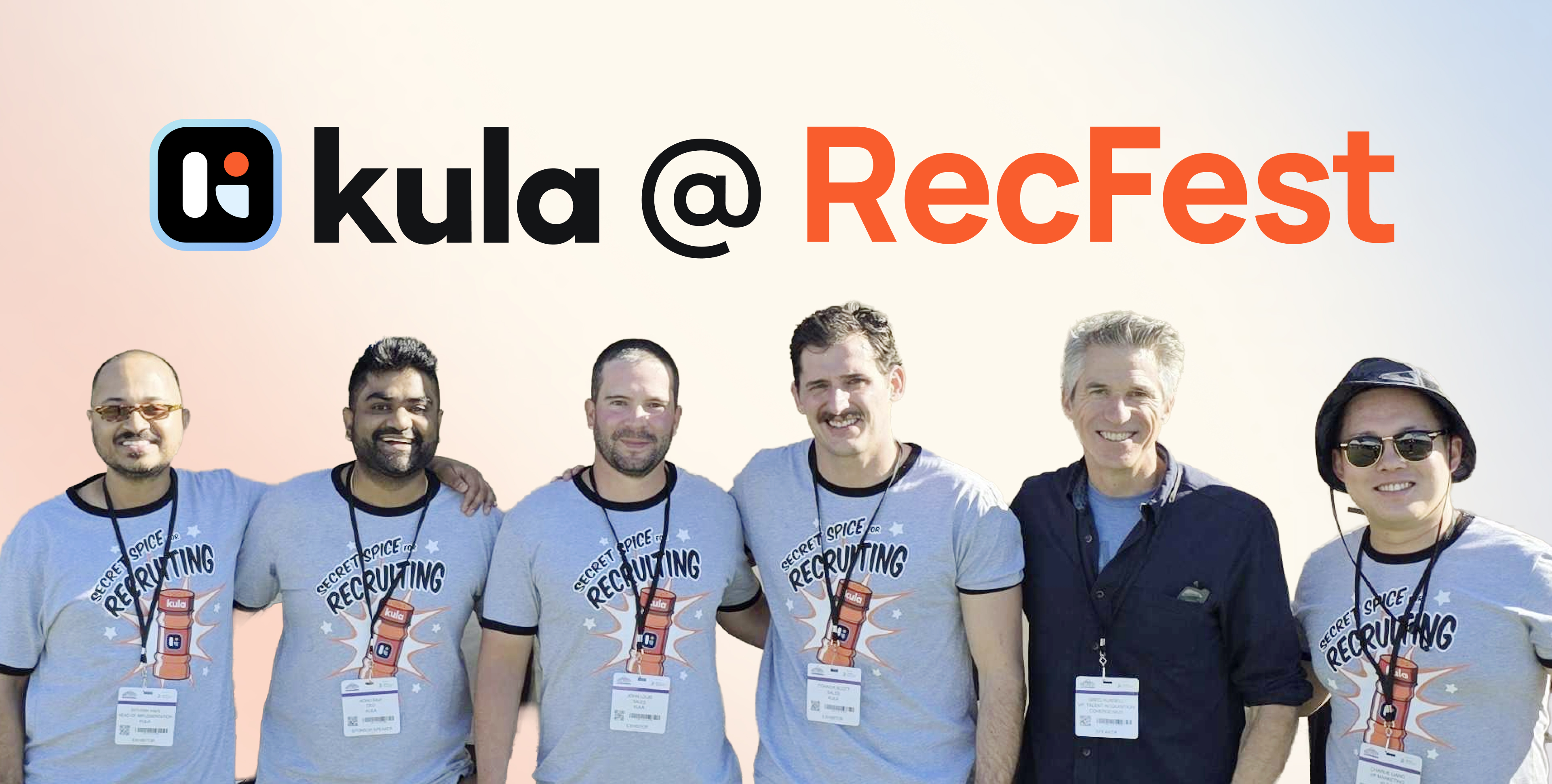Book a 30-minute demo and learn how Kula can help you hire faster and smarter with AI and automation
Talent OS as a term has been catching up. As a concept, it has existed for some time now and it is built using multiple tools strung together. Let’s begin by defining it.
How do we define a Talent OS?
A talent operating system (Talent OS) is a term used to describe a set of processes and technologies that are designed to help organizations manage and develop the skills and abilities of their employees. This may include tools and practices for identifying employee strengths and areas for development, training and development programs, performance management systems, and other resources and practices that help employees grow and succeed in their roles.
The goal of a Talent OS is to create a culture of continuous learning and development within the organization and to ensure that employees have the skills and capabilities they need to meet the changing needs of the business.
Talent OS is more than just recruitment
There are several key tenets that are typically associated with a talent operating system (Talent OS). These may include:
- Continuous learning and development: A Talent OS should foster a culture of continuous learning and development within the organization, with a focus on helping employees acquire new skills and knowledge throughout their careers.
- Talent identification and development: A Talent OS should include processes and tools for identifying employee strengths and areas for development, and for providing training and development opportunities to help employees grow and succeed in their roles.
- Performance management: A Talent OS should include a system for managing and tracking employee performance, including setting goals, providing feedback and support, and measuring progress.
- Employee engagement: A Talent OS should aim to foster a sense of engagement and ownership among employees, encouraging them to take an active role in their own development and the success of the organization.
- Data-driven decision making: A Talent OS should be based on data and analytics, using employee data to inform decisions about talent development and performance management.
- Collaboration and communication: A Talent OS should encourage collaboration and open communication within the organization, promoting a culture of teamwork and mutual support.
Talent OS vs Recruitment OS
A talent operating system (Talent OS) and a recruitment operating system (Recruitment OS) are both systems that are designed to help organizations manage and develop the skills and abilities of their employees. However, there are some key differences between the two:
- Scope: A Talent OS is typically broader in scope and aims to support the development and growth of employees throughout their careers, while a Recruitment OS is focused specifically on the recruitment and hiring process.
- Tools and technologies: A Talent OS may include a range of tools and technologies, such as performance management software, learning management systems, and data analytics tools, while a Recruitment OS is likely to include tools such as applicant tracking systems and recruitment marketing platforms.
- Goals: The main goal of a Talent OS is to help organizations identify and develop the skills and abilities of their employees, while the main goal of a Recruitment OS is to identify and hire the best candidates for open positions.
Let us define a Talent OS for recruitment (or Recruitment OS)
A talent operating system (Talent OS) for recruitment would involve a set of processes and tools that are designed to help organizations identify, attract, and hire the best candidates for open positions.
Some key elements of a Talent OS for recruitment might include:
- Job posting and applicant tracking systems: These tools can be used to post job openings, receive and track resumes and applications, and schedule interviews.
- Recruitment marketing: This may involve the use of various marketing tactics and channels to attract candidates to open positions, such as targeted job ads, social media, and employee referral programs.
- Candidate screening and assessment: A Talent OS for recruitment might include tools and processes for evaluating candidates, such as resume review, skills assessments, and interviews.
- Onboarding and orientation: Once a candidate is hired, a Talent OS for recruitment should include processes for onboarding and orienting the new hire, including training and integration into the organization.
- Talent pipeline management: A Talent OS for recruitment should also include processes for managing and tracking potential candidates for future openings, including maintaining a database of qualified candidates and regularly engaging with them.
What are the key tools that make up the Recruitment OS?
There are a range of tools that can be useful in building a talent operating system (Talent OS) for recruitment. These may include:
- Applicant tracking systems (ATS): An ATS is a software platform that is used to manage the job application process, including posting job openings, receiving and tracking resumes and applications, and scheduling interviews.
- Recruitment marketing platforms: These platforms can be used to advertise job openings and attract candidates through various channels, such as social media and targeted job ads.
- Skills assessments and online testing: These tools can be used to evaluate the skills and abilities of candidates, helping to identify the best fit for open positions.
- Interview scheduling and assessment tools: Tools such as video conferencing platforms and online interview assessments can be used to facilitate and evaluate candidate interviews.
- Onboarding and orientation software: These platforms can be used to provide new hires with information and resources to help them get up to speed quickly, as well as to track their progress during the onboarding process.
- Talent pipeline management software: This type of software can be used to track and manage potential candidates for future openings, including maintaining a database of qualified candidates and regularly engaging with them.
The evolution of Talent OS in 2023 and beyond
It is likely that talent operating systems (Talent OS) for recruitment will continue to evolve and change as new technologies and practices emerge. Some potential areas of evolution for Talent OS in the realm of recruitment may include:
- Increased use of artificial intelligence and machine learning: These technologies may be used to automate and enhance various aspects of Talent OS for recruitment, such as resume parsing, candidate screening, and job posting.
- Greater focus on diversity, equity, and inclusion: Talent OS for recruitment may place a greater emphasis on ensuring that recruitment practices are inclusive and diverse, and that candidates from underrepresented groups are given equal consideration.
- Personalization: Talent OS for recruitment may become more personalized and tailored to the needs and goals of individual candidates, rather than being a one-size-fits-all approach.
- Remote work: As more organizations adopt remote work policies, Talent OS for recruitment may need to adapt to support remote hiring and onboarding processes.
- Integration with other systems: Talent OS for recruitment may become more integrated with other systems and tools that organizations use, such as human resources information system (HRIS) and Learning Management System (LMS) platforms, to create a more seamless and streamlined experience for candidates.
Our Other Resources on Outbound Recruiting






















